Dacia Spring vs MINI MINI – Differences & prices compared
Compare performance, boot space, consumption and price in one view.
Find out now: which car is the better choice for you – Dacia Spring or MINI MINI?
The Dacia Spring (SUV) comes with a Electric engine and Automatic transmission. In comparison, the MINI MINI (Hatchback or Convertible) features a Petrol or Electric engine with Automatic transmission.
When it comes to boot capacity, the Dacia Spring offers 308 L, while the MINI MINI provides 275 L – depending on how much space you need. If you’re looking for more power, decide whether the 65 HP of the Dacia Spring or the 258 HP of the MINI MINI suits your needs better.
In terms of consumption, the values are 13.20 kWh per 100 km for the Dacia Spring, and 13.80 kWh5.90 L for the MINI MINI.
Price-wise, the Dacia Spring starts at 14500 £, while the MINI MINI is available from 23300 £. Compare all the details and find out which model fits your lifestyle best!
Dacia Spring
The Dacia Spring stands out as an affordable and environmentally friendly option in the electric vehicle market, combining practicality with a compact design ideal for urban settings. Its minimalist interior, while basic, provides all the essential features needed for a comfortable drive, reflecting its cost-effective approach. The vehicle's performance suits city driving, making it an appealing choice for those seeking an entry-level electric car.
details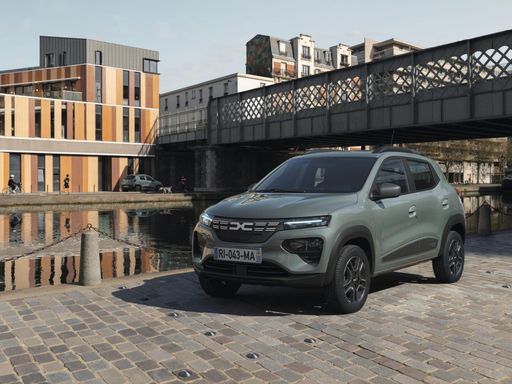 @ dacia-presse.de
@ dacia-presse.de
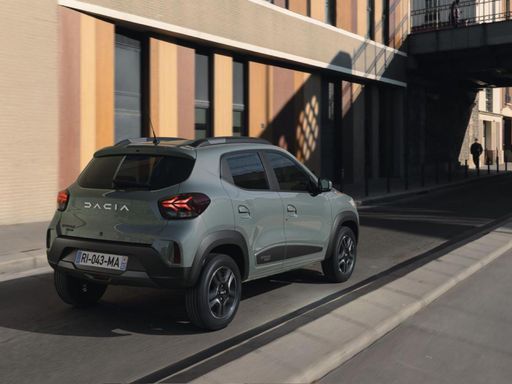 @ dacia-presse.de
@ dacia-presse.de
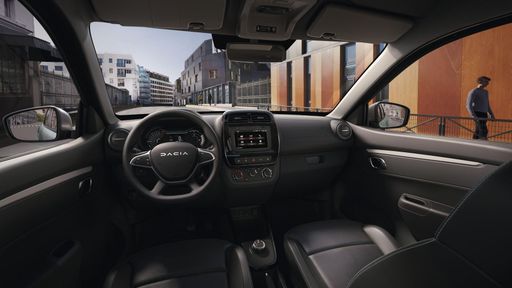 @ dacia-presse.de
@ dacia-presse.de
MINI MINI
The MINI MINI offers an iconic design that seamlessly blends classic charm with modern flair, making it a standout choice in urban environments. Its compact dimensions are deceiving, as the interior is cleverly designed to provide ample comfort and functionality, making daily commutes and weekend getaways equally enjoyable. With responsive handling and a spirited engine, driving the MINI MINI delivers an engaging experience that's perfect for navigating both city streets and winding country roads.
details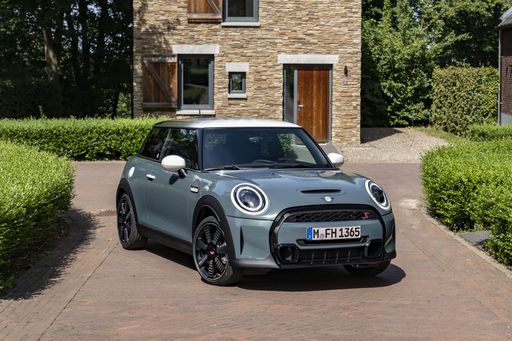 @ press.bmwgroup.com
@ press.bmwgroup.com
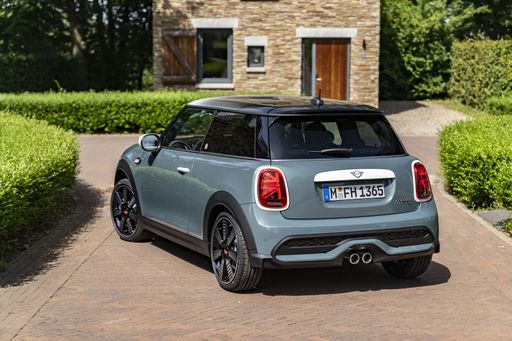 @ press.bmwgroup.com
@ press.bmwgroup.com
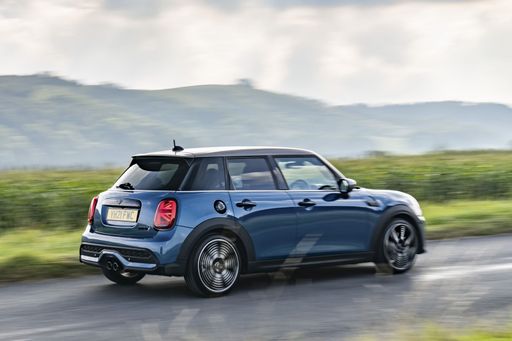 @ press.bmwgroup.com
@ press.bmwgroup.com
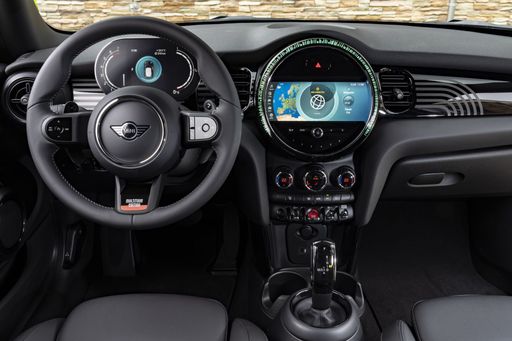 @ press.bmwgroup.com
@ press.bmwgroup.com

|

|
|
|
|
Costs and Consumption |
|
|---|---|
|
Price
14500 - 17100 £
|
Price
23300 - 37500 £
|
|
Consumption L/100km
-
|
Consumption L/100km
5.9 - 6.8 L
|
|
Consumption kWh/100km
13.2 - 14.1 kWh
|
Consumption kWh/100km
13.8 - 15.3 kWh
|
|
Electric Range
225 - 228 km
|
Electric Range
298 - 402 km
|
|
Battery Capacity
26.80 kWh
|
Battery Capacity
36.8 - 49.8 kWh
|
|
co2
0 g/km
|
co2
0 - 155 g/km
|
|
Fuel tank capacity
-
|
Fuel tank capacity
44 L
|
Dimensions and Body |
|
|---|---|
|
Body Type
SUV
|
Body Type
Hatchback, Convertible
|
|
Seats
4
|
Seats
4 - 5
|
|
Doors
5
|
Doors
2 - 5
|
|
Curb weight
1013 - 1050 kg
|
Curb weight
1335 - 1730 kg
|
|
Trunk capacity
308 L
|
Trunk capacity
210 - 275 L
|
|
Length
3701 mm
|
Length
3858 - 4036 mm
|
|
Width
1583 mm
|
Width
1744 - 1756 mm
|
|
Height
1519 mm
|
Height
1431 - 1464 mm
|
|
Payload
265 - 302 kg
|
Payload
345 - 445 kg
|
Engine and Performance |
|
|---|---|
|
Engine Type
Electric
|
Engine Type
Petrol, Electric
|
|
Transmission
Automatic
|
Transmission
Automatic
|
|
Transmission Detail
-
|
Transmission Detail
Dual-Clutch Automatic
|
|
Drive Type
Front-Wheel Drive
|
Drive Type
Front-Wheel Drive
|
|
Power HP
44 - 65 HP
|
Power HP
156 - 258 HP
|
|
Acceleration 0-100km/h
13.7 - 19.1 s
|
Acceleration 0-100km/h
5.9 - 8.2 s
|
|
Max Speed
125 km/h
|
Max Speed
160 - 250 km/h
|
|
Torque
113 - 125 Nm
|
Torque
230 - 380 Nm
|
|
Number of Cylinders
-
|
Number of Cylinders
3 - 4
|
|
Power kW
33 - 48 kW
|
Power kW
115 - 190 kW
|
|
Engine capacity
-
|
Engine capacity
1499 - 1998 cm3
|
General |
|
|---|---|
|
Model Year
2024
|
Model Year
2024 - 2025
|
|
CO2 Efficiency Class
A
|
CO2 Efficiency Class
D, E, A
|
|
Brand
Dacia
|
Brand
MINI
|
Dacia Spring
The Revolution of Affordable Electric Mobility: The Dacia Spring
The automotive world has witnessed remarkable advancements in electric vehicles (EVs), with the Dacia Spring emerging as a noteworthy contender in the affordable segment. Combining efficiency, affordability, and practicality, the Spring offers an intriguing prospect for eco-conscious individuals and city dwellers alike.
Powertrain and Performance: A Look Under the Hood
The Dacia Spring is equipped with an electric motor that delivers between 44 to 65 PS, translating into a versatile driving experience tailored to urban landscapes. It operates on a front-wheel-drive system, ensuring a familiar and manageable handling experience.
Dacia Spring's electric engine is paired with an automatic transmission, utilising a reduction gearbox. This setup allows for smooth acceleration and a top speed of 125 km/h, ensuring that everyday driving scenarios are handled with ease.
Efficiency and Range: Eco-Friendly without Compromise
Efficiency is a cornerstone of the Dacia Spring's design, boasting an energy consumption of just 13.2 to 14.1 kWh per 100 km. When fully charged, its 26.8 kWh battery offers a respectable range of 225 to 228 km, making it ideal for daily commutes and short trips.
Furthermore, the Spring takes pride in its commendable CO2-efficiency class A, emphasising its commitment to reducing environmental footprint with a zero-emission profile.
Design and Practicality: Compact yet Comprehensive
Lying in the SUV category, the Dacia Spring is compact with dimensions of 3701 mm in length and 1583 mm in width, making it a perfect match for urban environments where space is at a premium. Despite its modest size, it provides a generous boot space of 308 litres, ensuring practicality isn’t sacrificed.
Comfort and Interior: For the Everyday Journey
The Dacia Spring comfortably seats up to four passengers. The cabin offers a minimalist yet functional design, available in multiple trim lines including Essential, Expression, and Extreme, allowing customers to choose according to their taste and requirement.
With its ergonomic layout and simplicity, the interior is crafted to enhance the driving experience by focusing on essential needs, avoiding unnecessary distractions.
Affordability and Accessibility: Breaking Barrier
The Dacia Spring stands out in the electric vehicle market due to its affordability, with prices ranging from 16,900 to 19,900 €. This ensures that environmentally friendly transportation is accessible to a broader audience.
Additionally, the Spring allows for cost-effective maintenance and operational expenses, offering monthly running costs between 570 to 599 € and cost per km between 22.8 to 24 cents, making it an economical choice in the long run.
Final Thoughts: The Future of Urban Mobility
In summary, the Dacia Spring serves as a testament to how electric vehicles can be both affordable and practical, without compromising on essential features. Whether it is for the eco-conscious urbanite or those looking for a cost-effective daily driver, the Spring is positioned as a viable solution for navigating the future of urban mobility.
MINI MINI
Introducing the New MINI MINI: A Fusion of Tradition and Innovation
The iconic MINI has always stood out on the roads, known for its unique style and compact size. The latest model series, the MINI MINI, continues to uphold the brand’s reputation while embedding a host of modern innovations that cater to the diverse needs of today’s drivers.
Power and Performance: Under the Bonnet
The MINI MINI offers a range of engine options that cater to different driving preferences. There's the choice of a traditional petrol engine or a more future-oriented electric motor. Petrol variants offer between 156 and 204 PS, providing a satisfying blend of power and efficiency with fuel consumption ranging from 5.9 to 6.4 L/100km. On the other hand, the electric variants come with power ratings of up to 218 PS and offer a driving range between 298 and 402 km on a single charge, with energy consumption measured at 13.8 to 14.4 kWh/100km.
Transmission and Drivetrain: Seamless and Efficient
All MINI MINI models are equipped with automatic transmission systems to ensure smooth and hassle-free drives. The petrol engines feature an automatic dual-clutch transmission (DKG), while the electric variants are paired with a reduction gearbox. Both systems work in harmony with the front-wheel-drive layout, ensuring responsive handling and a dynamic driving experience.
Design and Dimensions: Compact Yet Spacious
The MINI MINI retains its compact dimensions with a length between 3858 and 4036 mm, making it ideal for city environments. Despite its compact size, it offers enough room to comfortably accommodate up to five passengers, with a boot capacity ranging from 210 to 275 litres. The interior is designed to maximise space without compromising on style or comfort, featuring high-quality materials and innovative layouts.
Safety and Efficiency: Future-Ready Technologies
The new MINI MINI is not just about aesthetics and power; it also prioritises safety and environmental efficiency. It complies with the highest safety standards, featuring advanced driver assistance systems. In terms of emissions, the petrol variants have CO2 efficiency classes in the range of D to E, while the electric variants boast an A-class rating, highlighting MINI's commitment to reducing its carbon footprint.
Pricing and Running Costs: Value for Money
With prices ranging from €28,900 to €45,860, the MINI MINI caters to a wide market segment, offering options that suit different budgets. Running costs are competitive, with monthly costs calculated between €868 and €1163 and per kilometre costs ranging from 34.7 to 46.5 cents. This makes the MINI MINI an economical choice, not just in terms of purchase price but also in everyday usage.
The MINI MINI is more than just a car; it's a statement of individuality and a testament to MINI's legacy of innovation and style. With its modern features, efficient performance, and timeless design, it continues to attract those who dare to stand out on the road. Whether you gravitate towards traditional petrol engines or embrace the electrified future, the MINI MINI offers something for every driver.
Which drive types are available for the Dacia Spring?
Available as Front-Wheel Drive.
The prices and data displayed are estimates based on German list prices and may vary by country. This information is not legally binding.
